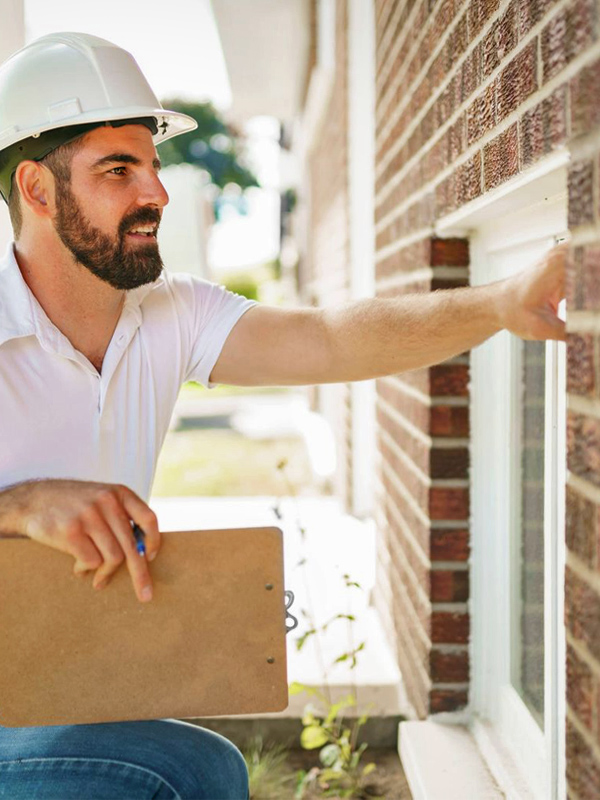Concrete Slab Foundation Repair
We recognize the distinct challenges associated with concrete slab foundations, a prevalent foundation type in homes across Texas.
The Texas Experts
Residential Concrete Slab Foundation Repair in Texas
A solid foundation is crucial for the structural integrity of any home. In Texas, where unique soil conditions frequently lead to foundation issues, ensuring that your concrete slab foundation is properly maintained and repaired is vital.
Residential concrete slab foundation repair is a specialized service that addresses the challenges posed by Texas soils, ensuring that your home remains stable and secure.
Understanding Concrete Slab Foundations
Concrete slab foundations are a popular choice for homes in Texas due to their strength and performance. These foundations are essentially large pads made of structurally reinforced concrete with built-in beams that extend below the surface, providing a stable base for the structure.
However, the expansive clay soils found throughout Texas can cause significant problems for slab foundations. These soils expand when wet and contract when dry, creating movement that can lead to cracks, uneven settling, and other structural issues.
Common Signs of Foundation Problems
Homeowners in Texas should be aware of the common signs indicating potential foundation problems. These may include visible cracks in the walls or floors, doors and windows that no longer open or close properly, and uneven or sloping floors.
If you notice any of these issues, it’s essential to reach out to our team as soon as possible. Early detection and repair can prevent more extensive damage and costly repairs down the line.
Repair Methods for Concrete Slab Foundations
- Concrete Pier: Concrete Pilings are our most economical option. These systems consist of concrete segments pressed to refusal and are the most commonly used piers in the industry. It is important to note that these piers’ performance is friction based, meaning the soils and moisture content will play a key role in the long-term performance of the lift. Due to the nature of this pier type, additional adjustments should be expected.
- Composite Pier: Composite Piers are a combination of concrete piers and interlocking steel pier segments. This pier type is great for partial lifts where only a portion of the home requires stabilization or lift. The perfect blend of performance and cost effectiveness for such projects.
- Helical Steel Pier: Also known as a “Screw Pile”, Helical Piers offer a versatile solution for many stabilization projects. Great for structures that do not have enough weight to drive other types of piers into the ground. Helical Piers can also be installed on unfinished homes that are already showing signs of movement. Helical Piers require a much larger work area clearance for the installation; However, installation can be done in a fraction of the time as other pilings.
- Drilled Pier: Drilled Piers, like Helical Piers, are a great solution for structures which do not have enough weight to drive other types of piers into the ground. For Drilled Piers, the location is excavated to the specified depth and width before steel reinforcements are installed and concrete is poured. Once cured, the structure is then adjusted to the desired final elevation.
- Cable-Anchored Steel Pier: Cable-Anchored Steel Piers consist of interlocking steel segments that are driven to refusal to provide the optimal stabilization solution. Steel Piers can reach further depths and sustain a higher load; this means Steel Piers are able to reach below the Active Zone and provide greater performance as compared to other pier types.
Why Choose Our Professional Foundation Repair Services
Having an experienced team with decades of experience is essential for ensuring the job is done correctly. Texas’s unique soil conditions require specialized knowledge and experience to address effectively.
Our team of skilled experts utilizes cutting-edge technology and industry best practices to deliver dependable, effective solutions. We prioritize clear communication, transparency, and integrity, ensuring you’re fully informed and confident in the services we offer.
Residential Services
Schedule Your FREE Estimate
"*" indicates required fields
Our Proven Process
Customer Reviews
Our commitment to detail, quality, and customer satisfaction positions us as the leader in concrete slab foundation repair.
Rating 4.8 / 5.0 ( 10K+ Total Reviews )
“I’m so glad we chose Perma Pier for our repair. They handled our foundation problems easily, and their customer service was top-notch. Highly recommend!”
“Professional, reliable, and efficient. They explained every step of the process and delivered. Best of all no work needed to be done inside the house. Very happy with the outcome.”
“The entire team was great to work with. They provided a clear explanation of the issues and fixed everything, including the giant lake (lol) in my yard. I highly recommend them!”

Frequently Asked Questions
Want to know more about concrete slab foundation repair? Our FAQ section covers the key questions homeowners ask most frequently.

